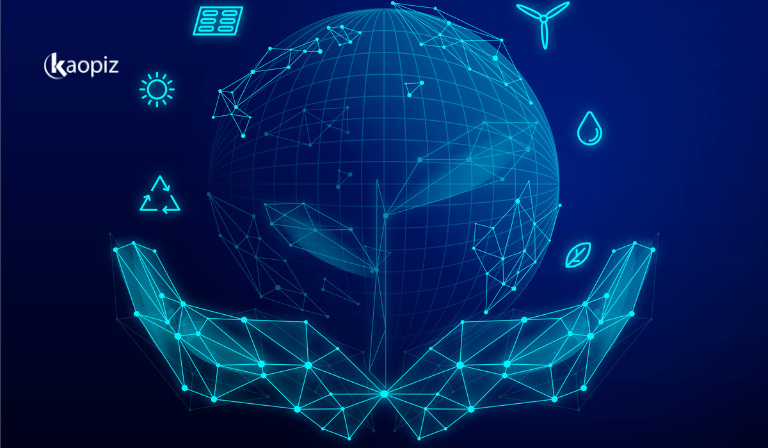Top IT Outsourcing Trends 2025: What’s Shaping the Future
IT outsourcing has become a strategic solution for businesses looking to reduce costs, access specialized expertise, and enhance efficiency. As technology rapidly evolves, companies are turning to outsourcing partners to stay competitive, streamline operations, and leverage the latest advancements in AI, cloud computing, and cybersecurity.
However, IT outsourcing also comes with challenges, such as data security risks and project management complexities. In this blog, we explore the latest IT outsourcing trends, benefits, and challenges and how businesses can navigate them for long-term success.
Table of Contents
- The Current State of IT Outsourcing
- Top 7 IT Outsourcing Trends in 2025
- Challenges in IT Outsourcing and How to Overcome Them
- How Kaopiz Supports Businesses with IT Outsourcing
- Conclusion
- FAQs
The Current State of IT Outsourcing
The IT outsourcing industry is experiencing rapid growth as businesses increasingly rely on external expertise to enhance efficiency, reduce costs, and accelerate digital transformation. With the integration of AI, cloud computing, automation, and big data, the future of it outsourcing is evolving from a cost-cutting strategy into a critical driver of innovation and scalability.
Market Growth and Projections
According to Statista, the global IT outsourcing market is set to reach $591.24 billion by 2025, highlighting its crucial role in the global economy. The sector is expected to maintain a compound annual growth rate (CAGR) of 8.28% from 2025 to 2029, pushing the market volume to $812.71 billion by 2029.
Companies are making significant investments in outsourcing to enhance efficiency and remain competitive. The average IT outsourcing spend per employee is projected to reach $164.56 in 2025, reflecting the increasing reliance on external IT services.
Key IT Outsourcing Destinations
Several countries dominate the global IT outsourcing landscape, offering high-quality services at competitive costs:
The Shift Toward SMEs in IT Outsourcing
While large enterprises have traditionally dominated outsourcing, small and medium enterprises (SMEs) are now driving significant market growth. The SME segment is projected to register the fastest CAGR from 2025 to 2030, as smaller businesses increasingly recognize outsourcing as a cost-effective way to access specialized skills, advanced technology, and flexible IT solutions.

Many SMEs face budget and resource constraints, making IT outsourcing a viable option to scale operations, improve security, and drive digital transformation. The rise of cloud solutions and pay-as-you-go pricing models further enables SMEs to adopt IT services without heavy upfront investments, fueling rapid growth in this segment.
In brief:
Top 7 IT Outsourcing Trends in 2025
As technology continues to evolve, IT outsourcing is adapted to meet new business demands. Here are the top seven IT outsourcing trends shaping the industry in 2025, from AI-driven automation to enhanced cybersecurity and sustainable IT solutions.
Increased Adoption of AI and Automation
The rise of AI and automation is revolutionizing IT infrastructure outsourcing trends, enabling businesses to enhance efficiency, reduce costs, and improve service delivery. As companies strive to stay competitive in a digital-first world, they are increasingly leveraging AI-powered solutions and robotic process automation (RPA) to streamline operations.
Research by McKinsey indicates that generative AI’s impact on productivity could add trillions of dollars in value to the global economy. For IT outsourcing, this underscores the importance of AI-driven solutions in meeting market demands. AI is also transforming software development outsourcing trends, with tools for automated testing, code generation, and predictive analytics enhancing delivery timelines.

Automation is reshaping IT outsourcing by reducing manual processes and improving operational efficiency. According to a McKinsey report, 60% of jobs could see 30% or more of their tasks automated by 2030, highlighting the increasing need for IT outsourcing providers to implement automation solutions such as RPA, self-healing IT systems, or DevOps automation.
Best practices:
Rise of Nearshoring and Regional Outsourcing
As businesses seek a more balanced and resilient approach to IT outsourcing, nearshoring and regional outsourcing are gaining momentum. While offshoring remains a cost-effective strategy, companies are increasingly distributing nearshore IT services between regional hubs and offshore centers to improve risk management, operational efficiency, and turnaround times.
The COVID-19 pandemic exposed the vulnerabilities of relying solely on distant outsourcing hubs, leading many businesses to explore nearshore and regional outsourcing as a more stable alternative. Many companies are now strategically combining regional and offshore outsourcing to enhance their IT operations. Gartner predicts that by 2025, 60% of outsourcing will involve both models to improve flexibility and efficiency.

For example:
Best Practices:
Focus on Cybersecurity and Data Protection
With cybercrime damages projected to reach $10.5 trillion annually by 2025, cybersecurity has become a top priority in IT outsourcing industry trends. As businesses face increasingly sophisticated cyber threats, they are shifting toward outsourcing cybersecurity services to access specialized expertise and advanced security technologies.
Two-thirds of companies worldwide have experienced cyberattacks. Many now require outsourcing providers to comply with ISO 27001, GDPR, and other regulations to safeguard sensitive data. Attackers are leveraging AI-driven fraud, ransomware, and phishing schemes, pushing companies to adopt stronger security measures.

To address these threats, outsourcing providers are integrating zero-trust security models, multi-factor authentication (MFA), and AI-powered threat detection. The rise of Cybersecurity-as-a-Service (CaaS) also offers businesses on-demand protection without heavy upfront investment.
Best practices:
Sustainability In IT Outsourcing
Sustainability is becoming one of the current trends in IT outsourcing, as businesses prioritize environmental, social, and governance (ESG) initiatives. According to the World Economic Forum, 92% of business leaders recognize ESG factors as essential to their long-term success. Beyond responsibility, sustainability also creates new business opportunities, with Capgemini predicting $1.2 trillion in potential growth for IT service providers by 2025.
Companies now prefer eco-friendly outsourcing partners that use energy-efficient data centers, carbon-neutral operations, and responsible e-waste management. Leading firms are investing in renewable energy and cloud efficiency. For example, Google’s data centers run on 100% renewable energy.

Governments are also enforcing green IT policies, requiring providers to meet ISO 14001 standards. Sustainable outsourcing not only reduces environmental impact but also improves brand reputation and ensures compliance with global regulations.
Best practices:
Growing Demand for Help Desk Outsourcing
Businesses are increasingly outsourcing help desk and IT support services to improve cost-efficiency, scalability, and customer experience. Instead of maintaining in-house support teams, companies are turning to outsourcing providers that offer 24/7 availability, multilingual support, and advanced technical expertise.
This trend is driven by the need for flexible, cost-effective solutions that adapt to fluctuating demand. Help desk outsourcing allows businesses to scale support services efficiently while maintaining high service quality.
Some key trends in help desk outsourcing include:
Best practices:
Cloud-First Strategies & DevOps Outsourcing
Businesses are increasingly adopting cloud-first strategies and DevOps outsourcing to enhance scalability, agility, and operational efficiency. As cloud computing becomes the backbone of modern IT infrastructures, organizations prioritize outsourcing cloud and DevOps services to accelerate deployments, reduce costs, and improve system reliability.

With a cloud-first approach, companies aim to migrate workloads to public, private, or hybrid cloud environments, enabling faster innovation and seamless scalability. Meanwhile, DevOps outsourcing helps businesses streamline software development, testing, and deployment processes, ensuring continuous integration and delivery (CI/CD).
Emerging trends in cloud & DevOps outsourcing:
Best practices:
Expansion of IT Staff Augmentation Services
The demand for IT staff augmentation is rising as businesses look for flexible and cost-effective ways to scale their teams. Instead of hiring full-time employees, companies are bringing in skilled IT professionals on a temporary or project basis to fill skill gaps and accelerate development.
This trend in outsourcing is especially valuable for industries needing specialized expertise in areas like AI, cybersecurity, cloud computing, and software development. IT staff augmentation allows businesses to adapt quickly to changing demands, reduce hiring costs, and access global talent pools without long-term commitments.
Best practices:
Challenges in IT Outsourcing and How to Overcome Them
While IT outsourcing offers numerous benefits, it also comes with challenges that can impact project success. Understanding these obstacles and implementing effective strategies can help businesses navigate outsourcing more efficiently.
Communication and Cultural Barriers
One of the biggest challenges in IT outsourcing is overcoming communication and cultural differences. Language barriers, varying communication styles, and time zone differences can lead to misunderstandings, project delays, and misaligned expectations. In some cases, offshore teams may struggle to interpret project requirements accurately, leading to inefficiencies and rework.

Additionally, cultural differences in work ethics, decision-making, and hierarchy can create friction between teams, affecting collaboration and productivity. To ensure smooth operations, businesses must adopt proactive strategies to bridge these gaps and improve collaboration with outsourcing partners.
Solutions:
Quality Control and Project Management Issues
Maintaining high-quality standards and efficient project management is a significant challenge in IT outsourcing. Differences in work methodologies, lack of direct supervision, and misalignment on quality expectations can lead to inconsistent deliverables.
If not managed properly, outsourced projects may suffer from delays, cost overruns, and subpar outcomes. Without clear accountability, businesses may find it difficult to track progress and ensure compliance with quality benchmarks.
Solutions:
Data Security and Compliance Risks
Outsourcing IT services often involves sharing sensitive business data with third-party vendors, increasing the risk of cyber threats, data breaches, and regulatory non-compliance. Many industries, such as finance, healthcare, and e-commerce, must adhere to strict data protection laws like GDPR, HIPAA, and ISO 27001. Failure to meet these standards can lead to hefty fines, reputational damage, and legal consequences.

Moreover, outsourcing to vendors in different countries adds complexity due to varying data protection laws and security protocols. Without strict security measures and compliance strategies in place, businesses may struggle to protect their confidential information and maintain regulatory standards.
Solutions:
Hidden Costs and Budget Management
While IT outsourcing is often seen as a cost-effective solution, hidden expenses can quickly add up if not properly managed. Unexpected costs may arise from contract loopholes, additional service fees, currency fluctuations, or project scope changes. Businesses that fail to account for these factors may experience budget overruns, reducing the financial benefits of outsourcing.

Another challenge is the lack of transparency in pricing models. Some outsourcing vendors may offer low initial costs but later charge extra for essential services like system upgrades, security enhancements, or extended support. Without a clear understanding of the full cost structure, businesses may struggle to control their outsourcing budgets effectively.
Solutions:
Dependency on Third-Party Vendors
Outsourcing IT functions to third-party vendors can improve efficiency and reduce costs, but it also creates a dependency that may lead to risks. Businesses relying heavily on external providers for critical operations may face challenges in maintaining control, ensuring quality, and managing unexpected disruptions. If a vendor fails to meet expectations, changes pricing structures, or discontinues services, it can severely impact business continuity.
Another concern is vendor lock-in, where companies become overly reliant on a specific provider’s technology, making it difficult and costly to switch vendors. Additionally, differences in work culture, service priorities, and response times can affect project outcomes, especially when outsourcing to offshore teams.
Solutions:
How Kaopiz Supports Businesses with IT Outsourcing
As businesses look for strategic outsourcing partners, choosing a provider that aligns with industry trends and offers tailored, scalable solutions is crucial. Kaopiz stands at the forefront of IT outsourcing company, delivering cutting-edge technology, seamless integration, and a commitment to security and innovation. With expertise in software development, cloud solutions, AI, and IT staff augmentation, we deliver tailored services that drive efficiency for businesses.

As a top IT outsourcing in Vietnam and a trusted outsourcing partner for global markets, including Japan, Singapore, Hong Kong, Australia, the US, and the EU, Kaopiz ensures seamless project execution with a strong focus on quality, compliance, and customer satisfaction. Our commitment to excellence enables businesses to scale effectively, reduce costs, and stay competitive in the evolving digital landscape.
How Kaopiz Aligns with IT Services Outsourcing Trends
Trusted by Fortune 200 companies and startups alike, Kaopiz remains a reliable partner for businesses looking to outsource to Vietnam and leverage sustainable growth.
Conclusion
IT outsourcing trends are rapidly evolving, driven by emerging technologies, shifting business priorities, and growing global demands. Companies are leveraging AI, cloud computing, cybersecurity, and staff augmentation to stay competitive while also addressing challenges like data security, project management, and cultural barriers.
Whether optimizing operations, enhancing efficiency, or adopting the latest digital solutions, partnering with the right IT outsourcing provider is the key to long-term success. Contact us today to explore how Kaopiz can elevate your business with customized IT outsourcing solutions!
FAQs
What Are the Technological Predictions for 2025?
Looking ahead, emerging technologies like blockchain, IoT, and quantum computing will shape the future of outsourcing in 2025. Providers are investing in these technologies to offer cutting-edge services and cater to new business needs. Software development outsourcing trends are also evolving, with a shift towards low-code and no-code platforms to speed up innovation.
Quantum computing will enable faster data processing, revolutionizing finance and healthcare IT outsourcing trends.
IBM and Google are working on quantum solutions to provide advanced computing capabilities to their outsourcing clients.
What Are the Benefits of Outsourcing IT Services?
Outsourcing IT services helps businesses reduce costs, access specialized expertise, and improve efficiency. It allows companies to focus on core operations while benefiting from scalable, flexible IT support. Outsourcing also enhances security, ensures compliance, speeds up project delivery, and provides access to the latest technology. Additionally, businesses gain 24/7 support, disaster recovery solutions, and faster time to market, making IT outsourcing a strategic advantage.
When Should You Outsource IT Services?
You should outsource IT services when you need to reduce costs, access specialized expertise, scale your team quickly, or improve efficiency. It’s ideal for handling complex projects, ensuring cybersecurity, managing cloud infrastructure, or when in-house resources are limited. Outsourcing is also beneficial for businesses looking to focus on core operations while leveraging expert IT support.




















